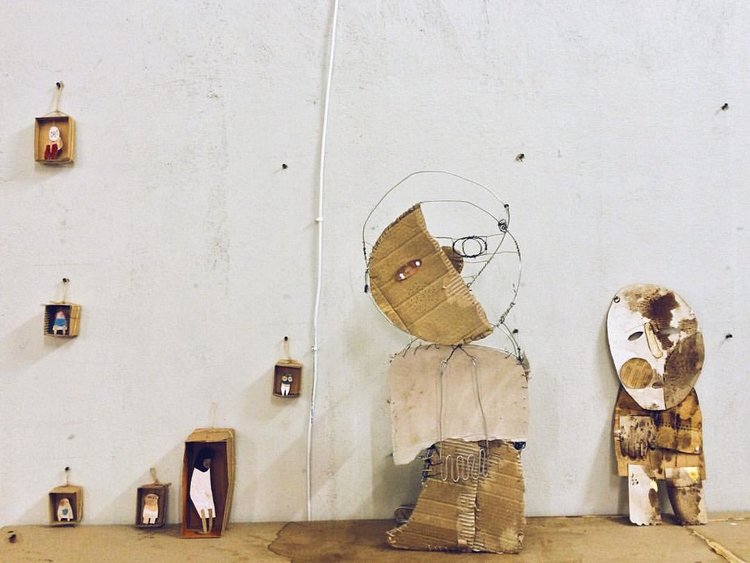Earthy colours. Muted tones. Abstract, stylistic characters cut, collaged and pasted together to form a whole. All to deliver emotion and critical thought.
Cairo-based visual artist, Kamila Bassioni completed her B.A. in scenography at the Fine Arts College in Egypt. Her work’s focus for the last few years has been freelance illustration, such as the design of book covers and illustrating children’s picture books. Outside of her commissioned work Kamila works on personal projects and has taken part in multiple group shows.

Kamila’s inspiration for personal work is often found in her commissioned projects, as well as from human emotion, thoughts and actions of suffering. With her art, she attempts to convey and share different ways of thinking, particularly with regards to concept. Her aim is to open up the eyes of her spectators and to facilitate a more critical view within her audience.
Working predominantly in paper and cardboard, Kamila merges cut-out and collaging techniques to create her characters that vary in size from minute to enormous. Each character evokes its own feeling and mood.

An example of this can be found in the project, Rags to Riches, an installation of large-scale standing dolls representing the hopelessness and pain of the 1930’s Great Depression and simultaneously paints the current state that Egyptian citizens find themselves in.
Kamila’s work has a tendency to convey feelings of anguish and pain. Her work ranging on melancholy attempts to instil a critical stance from her viewer and touches on politically loaded subjects, reflecting on out past and present world.









